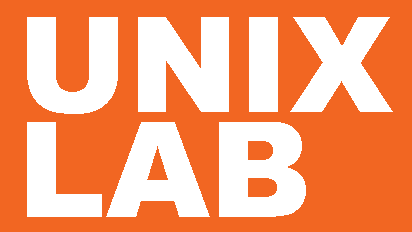Introduction to Refinery Planning using Aspen PIMS
Course ID : RPA101
Duration In-class (в days) : 5 days
Duration Online : 5 days
Сurriculum : in-class, Virtual Instructor-Led Training - ONLINE
Price : $3 225
Overview
This course will help you prepare for the certification exam and the exam fee is waived with this course.
Learn how to solve refinery planning problems using Aspen PIMS and Aspen PIMS-Advanced Optimization. This hands-on course has been revised to incorporate problem-based learning by using relevant refinery problems to optimize results. You will not only learn how to use the tools, but you will also learn how to troubleshoot.
Learn how to use Aspen PIMS for sustainability modeling for refinery planning and use in-built reports for CO2 emission analysis. You will work on an Aspen PIMS example model that covers two main sources of CO2, the Fluidized Catalytic Cracker (FCC) plant and the Fuel Gas system
This course is designed for new planners and modelers who have 1 year or less experience in Aspen PIMS / Aspen PIMS-AO and need experience in building and optimizing refinery planning models to generate optimum plans.
Audience for this course
Technical as well as non-technical personnel who have no experience in linear programming. Also, this course provides a person who is knowledgeable in LP (but not necessarily knowledgeable in Aspen PIMS) with a quick way to gain a good understanding of the system.
Objective
- Instruction on principle topics
- Hands-on problem solving approach allows the student to gain an understanding of the most important Aspen PIMS data tables, menu options and reports
- The class problems are designed to illustrate how to model and resolve real world planning problems and also how to interpret and troubleshoot LP solutions.
Prerequisites for this course
A basic understanding of Microsoft Windows and a working knowledge of Microsoft Excel, together with a general awareness of the interaction between refining technology operations and planning is strongly suggested.
Outcomes
- Learn LP fundamentals
- Gain familiarity with key Aspen PIMS tables and formats
- Develop simple Aspen PIMS model and understand how the matrix structures are generated
- Execute and troubleshoot various case scenarios and analyze information from Aspen PIMS reports
- Perform basic economic evaluations
Outline
Getting Started What is Aspen PIMS
- Overview of Aspen PIMS
Review of Linear Programming Concepts
- Introduce Linear Programming concepts
- Workshop: Matrix Arithmetic – Find the activities for specified variables given a partial Aspen PIMS generated matrix
Aspen PIMS User Interface
- Review of Aspen PIMS logical work flow
- Explanation of all PIMS menu options, features and functions:
- File and Data Management
- Model Validation (Data and Structures)
- Matrix Generation
- Optimization and Solution
- Case Stacking Feature
- Aspen PIMS Help
- Data Assistant
Aspen PIMS Data Tables and Table Format
- Introduce the Aspen PIMS Data Tables and Table Format conventions
Aspen PIMS Supply and Demand Tables
- Introduce the Aspen PIMS Supply and Demand Tables
Review of Economic Concepts
- Introduce process economic concepts; marginal values, marginal cost and revenue curves
- Explain the relationship of marginal value and DJ
- Calculate Marginal revenue for feedstocks and Marginal cost for products
- Discuss recommended uses for Marginal Values
- Calculate Break Even Value
Case Stacking
- Introduce and define cases in Table CASE
- Workshop:Case Stacking – Add Table CASE to a model with multiple cases.
Product Blending
- Declare blended materials
- Identify components for blends
- Define blending specifications
- Provide static properties for any material in the model
- Workshop:Evaluate a Gasoline Feedstock – Evaluate blending and distillation data for purchasing price considerations
- Workshop: Evaluate a Gasoline Product – Conduct an economic evaluation for a given gasoline product.
Process Submodels
- Introduce Process Submodels
- Workshop: Build a Gas Plant – Use given data to define the various process units inside a complex, including relevant purchases and sales
Yields that Vary with Feed Quality (Base-Delta)
- Introduction to yields that change based on feed quality
- Workshop: Evaluate an Intermediate Feedstock (Cat Cracker)
Pooling and Recursion
- Introduction to rules for creating recursed pools
- Review techniques used to solve the pooling problem
- Workshop: Create a Recursed Pool
Parameter Rows
- Introduce the functions of Parameter rows
- Workshop: Parameter Rows in Submodels – Add P-row structure to various models
Crude Distillation Tables
- Introduce crude unit architecture
- Declare logical crude units
- Define crude distillation cutting scheme
- Assign specific assay tables for specific logical crude units
- Workshop: Evaluate a New Crude Oil
Assay Management
- Introduce the capabilities and features of PIMS Assay Management
- Workshop: Evaluate a New Crude Oil
- Workshop: Run Spot Crude Evaluation
Row and Column Names in the Aspen PIMS Matrix
- Review the row and column naming conventions used in the Aspen PIMS Matrix
Miscellaneous Tables
- Introduce Aspen PIMS Miscellaneous Tables
Row and Column Names in the Aspen PIMS Matrix
- Review the row and column naming conventions used in the Aspen PIMS Matrix
Troubleshooting
- Evaluate a solution and troubleshoot the issues you encounter when working with PIMS and PIMS-AO
- Workshop: Troubleshooting Tools
Common Mistakes
- Review commons mistakes made when using Aspen PIMS
- Workshop: Add a New Crude Unit
Additional Features
Summarize additional features in
- PPIMS Models
- MPIMS Models
- XPIMS Models
- PIMS-Advanced Optimization
Certification Exam




